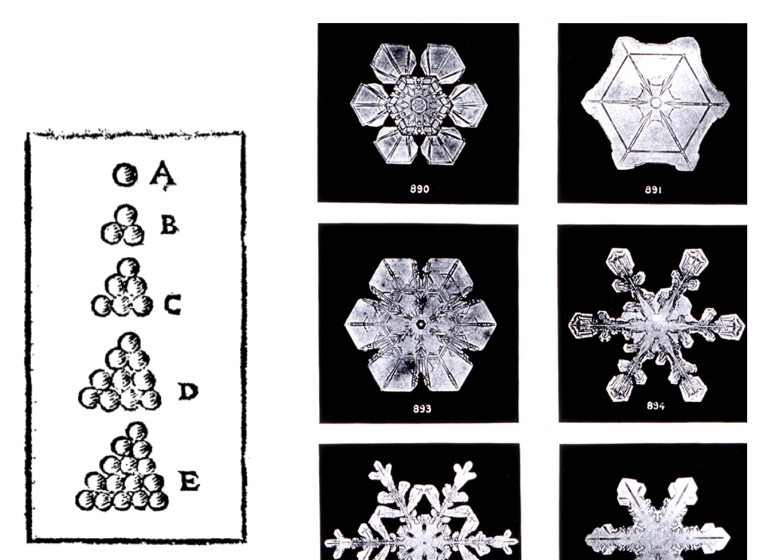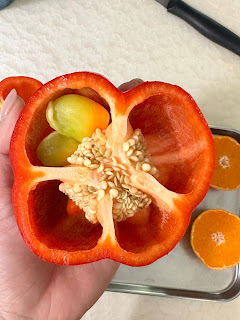This week, I read an interesting old text by Johannes Kepler from 1611. It's called "On the Six-pointed Snowflake: A New Year's Gift." I'll be honest, understanding it was tough, and it took me longer than I thought.

He suggests that the hexagon shape (like a six-sided star) is the best way for snowflakes to fit together efficiently. He compares it to the hexagon cells in bee hives and honeycombs, as well as the way pomegranate seeds are tightly packed.
Kepler's idea is that the six-sided shape comes from how tiny bits of water arrange themselves to fill space most efficiently. He says it's similar to the structure inside honeycombs, which is like the space between ice crystals and snowflakes.
He also notices that some fruit trees, like apples and pears, have flowers with five corners. Kepler thinks this is special and connected to the soul of these plants.
This reading made me think of my first-grade students and how they get excited about snow. They have so many questions about how snow melts, why it turns into ice, and even why it sometimes turns black. Although they didn't ask about the shape of snowflakes in a geometrical way, I believe mathematicians like Kepler started exploring the world from their own experiences.
The next day, the weather got very cold in Korea, and I saw snowflakes on the classroom window. I encouraged my students to be like scientists and mathematicians. They drew what they saw and asked how long the snowflakes would stay on the window, focusing more on time than shapes.
Reference
Excerpts from Johannes Kepler (1611/ 2010) On the Six-pointed Snowflake: A New Year's Gift.













Hi Sue
ReplyDeleteI really enjoyed reading your exploration of Johannes Kepler's work and your application of multisensory experiences in teaching math. It is impressive how you connected Kepler's observations about the hexagonal shape of snowflakes to your first-grade students' curiosity about snow. The way you encouraged them to be like scientists and mathematicians, drawing and questioning, which is a fantastic approach to fostering a love for learning.
Also, your realization of the importance of multisensory experiences in learning, especially in exploring 3D shapes, is perfect. It is encouraging to see how you have personally embraced this idea by incorporating touch, feel, sight, and even taste into your exploration of mathematical concepts using fruits and vegetables. Therefore, your connection between Kepler's observations on the five-pointed star pattern in apples and your observation is fantastic.
In addition, your point about the significance of sensory activities for students with disabilities is crucial. Indeed, it is inspiring to hear that your school actively engages these students in sensory activities as a fundamental part of their learning process. Inclusivity in education, ensuring that all students, regardless of abilities, can participate and learn, is an ideal approach.
As we think about implementing multisensory experiences in teaching, I am curious to hear from you and other readers about specific activities or strategies that have worked particularly well in their classrooms. Have you encountered any challenges in incorporating multisensory elements, and if so, how did you overcome them?
Wonderful job, Sue! Any time I can bring food into the math classroom, I’ll be there!
ReplyDeleteI had never wondered about snowflakes before, but Kepler brings up some really interesting points. Thank you for persevering through the article for us! It’s true that six-sided shapes are everywhere, and human design is gradually recognizing their usefulness in a way that bees and plants seem to have done long ago. What luck that you had snow this week and were able to bring these thoughts into your classroom!
I completely agree that engaging all the senses is important to making math more “real”, but have struggled with it in the past. Cutting open fruits and vegetables to examine what shapes are found in nature is an excellent idea and one that would be sure to engage my first grade students. I have students who struggle with senses in a way that makes paper and listening work challenging for them, and your activities and articles this week gave me more options to draw them (as well as their peers, as evidenced in my reading this week!) into our mathematical journey.